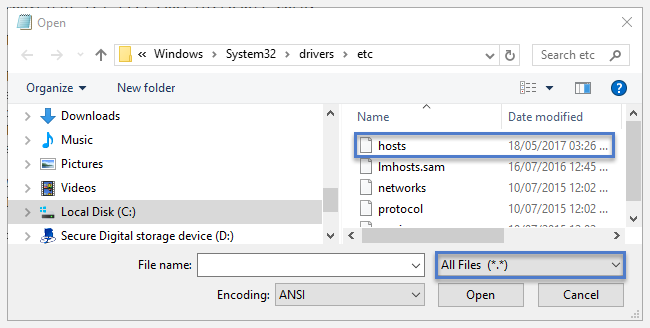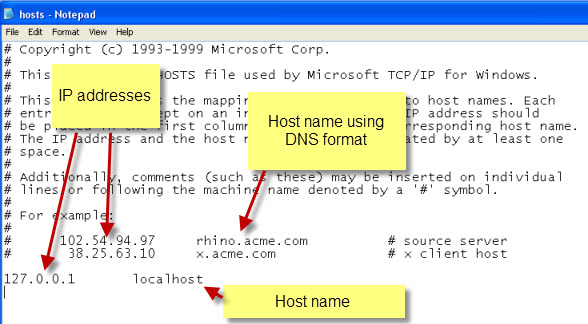


From Notepad, open the following file: c:\Windows\System32\Drivers\etc\hosts.However it is important to note the hosts file doesn’t have a file extension like. The hosts file is a simple text file that can be edited with a text editor like notepad. android) etc and can be very useful for testing purposes. In the search results, right-click Notepad and select Run as administrator. The hosts file is still present on computer systems (windows,Linux, MAC), tablets (e.g.Once you have located your server’s IP address, you can use the following instructions to preview your website before changing your DNS using your computers hosts file. If you are a ChemiCloud customer, the server IP address can be found under the Info section within your Client Area. Preparing to Preview Your Websiteįor you to be able to preview a website from a specific server you will need to know the IP address that is assigned to the server hosting your website. What is Hosts File A text file that provides a local method for resolution of fully qualified domain names into their respective IP addresses on a TCP/IP network.
#Hosts file free#
There are also some free online tool options for beginners if you aren’t feeling comfortable editing your hosts file. It can be used to route online traffic or sometimes block a website.
#Hosts file windows#
The most accurate way to preview your site from our platform will be to use your local computer’s hosts file. The hosts file is a small text file which is part of the Windows operating system. There are a few different ways to preview your site before switching the DNS to your ChemiCloud server. To open the hosts file for editing, type the following command: 2. The master hosts file was compiled and stored on the machines at. Log in to your Linux machine and open a terminal. This can come in handy after migrations as you might want to test how your website works on a different server before changing the DNS or in case the DNS hasn’t propagated yet. The hosts file listed, line by line, Internet domain names and their associated IP addresses. etc/hosts is a powerful tool that can be used for various purposes, and it is important to understand how it works to use it effectively.Using your computer’s hosts file will allow your computer to override the results of a typical DNS query and instruct your computer to always load your website from a specific server or IP address. For example, If someone wants to block all traffic to, they can add an entry in /etc/hosts that points to 127.0.0.1, which is the loopback address and will not resolve to any actual website. That can be helpful for parents to control website access to their loved ones. We can also use this file to prevent access to any domain. So the browsing and opening other networks by name will be smoother by avoiding DNS server.

#Hosts file how to#
How to Edit the Hosts File in Windows 10 and 11. The hosts file is a computer file used by the operating system to connect host names (domain names) with IP addresses. The Hosts file converts the host name to IP and vice versa.
#Hosts file Pc#
is mapped with 127.0.0.1 (localhost). Since the hosts file is the first port of call for a PC, you can enter an invalid address for the targeted site to stop your PC from accessing it.Here is mapped to 192.168.1.210 IP address The hosts file is a file on your computer or other device that is used as the first step in the DNS lookup process for DNS hostname resolution.

For example: Local domain binding with /etc/hosts This can be done by adding entries for those servers in /etc/hosts with their corresponding IP addresses. You can also use /etc/hosts to resolve domain names that are not in the global DNS, such as local development servers or intranet servers. The default /etc/hosts look like below: Default /etc/hosts file Adding New Entry in /etc/hosts etc/hosts are usually the first file checked when resolving a domain name, so it can be used to block websites or redirect users to different websites. The hosts file in Windows 11 is a very important file for Windows systems. It is used for static name resolution, which is not updated automatically like the Domain Name System (DNS) records. etc/hosts is a text file on a computer that maps hostnames to IP addresses.


 0 kommentar(er)
0 kommentar(er)
